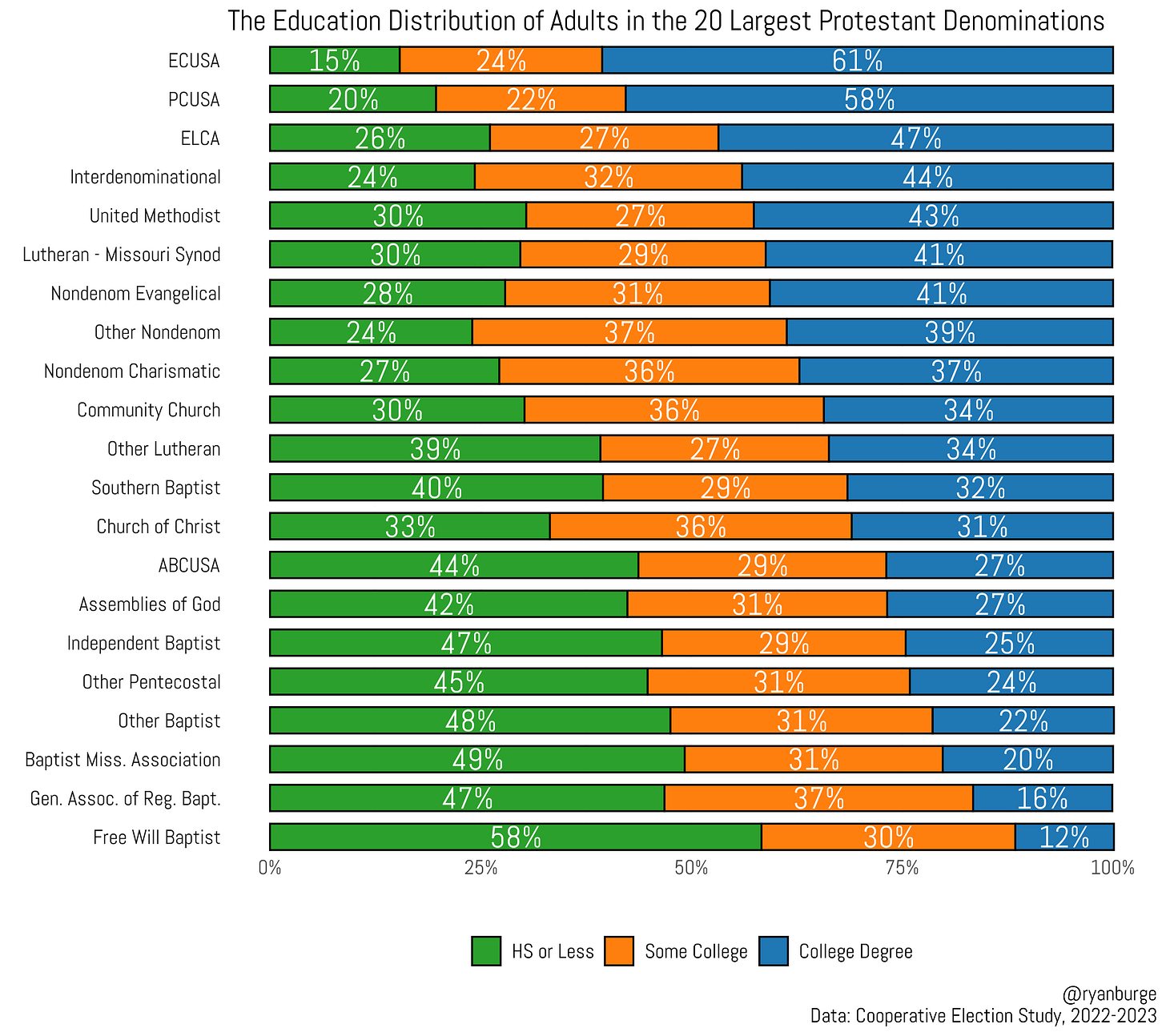The Socioeconomic Status of American Religious Traditions
Education and Income Among Dozens of Religious Groups
Note: I knew it was going to happen eventually but I made a coding mistake in the original post and it changes the first two graphs. Thanks to Jana Reiss for helping me track it down. This post has been updated with the correct code and the text has been altered to reflect the corrected graphs. For a look at how I screwed this up - here’s a code snippet.
One of my favorite data visualizations about American religion comes from the classic book by Finke and Stark, The Churching of America. It appears in a larger discussion of how the authors believe that mainline Protestant Christianity got complacent and that’s one of the reasons that they stopped growing. The example that they use comes from the First Methodist Episcopal Church in Evanston, Illinois. It’s a diagram of the sanctuary and lists the cost of renting a section of a pew for the year in their sanctuary.
This colorized version of the chart found in the book comes from this website. Notice where the high-dollar pews are? Not in the front or the back, but right in the middle. It cost $200 per year to get half a pew (which would likely seat six comfortably). In today’s money, that’s about $6,500 for a pew rental. The seats in the very back were pretty cheap, though. Just $25 a year (around $800 in 2024).
The bigger argument that Finke and Stark make is about the socioeconomic makeup of the mainline. It was seen as a tradition for those who had quite a bit of money in their bank account and often worked in white collar jobs with other people who had a high level of education and specialized training. Evangelical churches were for the factory workers and the mechanics. Lawyers and doctors packed the pews of the United Methodist Church or the Episcopalians.
But does that perception still hold up after the religious landscape has been reshaped so radically in the last thirty years? Are mainliners really more educated and have higher incomes than folks in evangelical denominations? Well, let’s find out.




